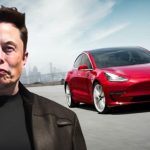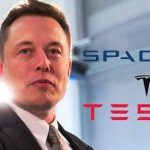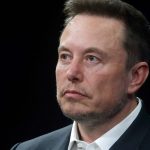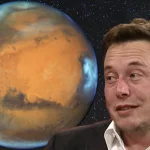Elon Musk’s Vision for Mars: Exploring Space Colonization
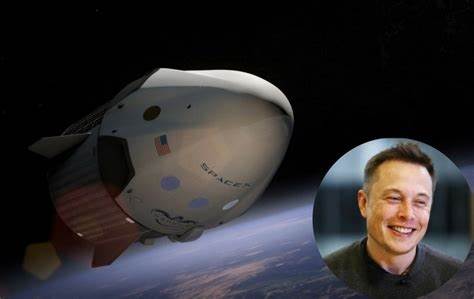
Elon Musk’s Vision for Mars: Exploring Space Colonization
Elon Musk—billionaire trailblazer, founder of SpaceX, and a mind that seems wired for the impossible—has set his sights on a goal that once belonged to the realm of science fiction: transforming humanity into a multi-planetary species. At the core of this audacious vision lies Mars, the rusty-red fourth planet from the sun, which Musk sees not just as a destination but as a lifeline—a “Plan B” for humankind’s survival. From reusable rockets to Martian cities, his plans blend engineering bravado with existential urgency. But what fuels this cosmic quest, how is SpaceX turning it into reality, and what could it mean for our species’ future? As of March 27, 2025, let’s dive into Musk’s Martian dream and the bold steps propelling it forward 🌍🚀.
Why Mars?
Musk’s fixation on Mars isn’t a whim—it’s a calculated response to humanity’s vulnerability. “If we stay on one planet, a single global catastrophe—like an asteroid strike or nuclear war—could wipe us all out,” he warned in a 2016 speech at the International Astronautical Congress (IAC), a refrain echoed in countless X posts since. Earth’s history backs him up: the Chicxulub impact 66 million years ago obliterated the dinosaurs, and modern threats—climate collapse, supervolcanoes, or humanity’s own weapons—loom large. Musk sees Mars as an insurance policy, a second cradle where civilization could reboot if Earth falters.
Why Mars over, say, the Moon or Venus? The Moon, while closer, lacks an atmosphere and sufficient resources for self-sufficiency—more a stepping stone than a home. Venus, with its crushing pressure and 460°C (860°F) surface, is a hellscape even Musk can’t tame. Mars, though harsh, offers tantalizing potential: a thin CO2 atmosphere, frozen water beneath its surface, and a 24.6-hour day eerily close to Earth’s. Musk believes it’s terraformable—pump in greenhouse gases, melt the ice caps, and maybe, just maybe, make it breathable over centuries. “Mars is the fixer-upper of planets,” he quipped on X in 2024, blending humor with his grand design. For Musk, it’s not just survival—it’s a canvas for human reinvention 🌌.
SpaceX’s Plan: From Vision to Action
SpaceX, founded in 2002 with Musk’s PayPal windfall, is the engine driving this dream. What began as a quixotic bid to spark a space renaissance has morphed into a powerhouse, launching satellites, ferrying astronauts, and now eyeing Mars. The linchpin is Starship—a gleaming, stainless-steel colossus standing 120 meters (394 feet) tall, designed to haul 150 tons of cargo or 100 passengers across the solar system. Unlike NASA’s Apollo-era rockets or even SpaceX’s own Falcon 9, Starship is fully reusable, slashing launch costs from hundreds of millions to a projected $2 million per trip—a game-changer Musk calls “the Holy Grail” of spaceflight.
1. The Journey to Mars
Musk’s timeline is as bold as his tech. He predicts the first crewed Mars landing by 2029, a date he’s stuck to since tweaking earlier forecasts (like 2024, which slipped due to Starship delays). The plan unfolds in phases: uncrewed missions in 2026—coinciding with the next Earth-Mars alignment—will test landings, deploy rovers, and drop supplies like solar panels and habitat modules. By 2028 or 2029, during the subsequent 26-month launch window (when Earth and Mars are closest, roughly 56 million kilometers apart), Starship will carry its first humans—a crew of engineers, scientists, and maybe Musk himself. Each trip, a six-to-nine-month trek powered by methane-oxygen Raptor engines, will lean on orbital refueling—tankers topping off Starship in low Earth orbit to maximize payload. By March 2025, six successful Starship test flights (including a full-stack orbital run) signal this isn’t just talk—it’s progress.
2. Building Infrastructure
Landing is just the start—Musk envisions a thriving Martian city. Initial settlers will live in pressurized habitats, possibly Starship hulls repurposed as shelters. Greenhouses, sealed against Mars’ 1% Earth atmospheric pressure, will grow crops—potatoes, algae, hydroponic greens—using Martian soil enriched with nutrients shipped from Earth. Solar panels, sprawled across the dusty plains (Mars gets 40% less sunlight than Earth), will power life-support and mining rigs to extract water from subsurface ice, confirmed by NASA’s Mars Reconnaissance Orbiter. Musk’s long game? A million-person colony by 2050-2070, with factories, schools, and bars—a “civilizational seed” that doesn’t need Earth to survive. X posts from 2025 tease “terraforming rigs” to thicken the atmosphere, a sci-fi flourish he admits is decades off.
3. Challenges and Solutions
Mars is no picnic. Cosmic radiation—unfiltered by a magnetic field—poses cancer risks; SpaceX counters with shielding materials like water walls or polyethylene. The 225-million-kilometer average distance means no quick rescues—Starships will pack redundant systems and 3D printers for spare parts. Microgravity en route (0g in transit, 0.38g on Mars) threatens bone loss; Musk’s team explores artificial gravity via rotating habitats, though 2025 prototypes lag. Launch windows, dictated by orbital mechanics, limit trips to biennial bursts—miss one, wait two years. SpaceX’s innovations—like autonomous landing tech honed on Falcon 9 boosters—tackle these, but skeptics on X note, “One leak, one storm, and it’s game over.” Musk shrugs it off: “Risk’s part of progress.”
A Bigger Vision: A Multi-Planetary Species
Musk’s Mars isn’t a one-off stunt—it’s a stepping stone to the stars. “Humanity should be a multi-planetary species,” he declared at the 2024 IAC, envisioning a future where consciousness spans planets and solar systems. Mars is the proving ground—master its challenges, and Jupiter’s moons (Europa, Callisto), Saturn’s Titan, even exoplanets beckon. He predicts this shift will ignite a tech renaissance: reusable rockets birthing asteroid mining, Martian habitats spawning closed-loop ecosystems for Earth. On X, he muses, “Mars forces us to rethink survival—food, air, energy. It’s evolution’s next filter.” Culturally, it could reframe humanity as cosmic explorers, a narrative shift he’s called “the ultimate adventure” since his 2001 Mars Society talks.
His quip—“I’d like to die on Mars, just not on impact”—captures his blend of optimism and gallows humor. It’s personal too: Musk, born 1971 in South Africa, grew up devouring Asimov and Heinlein, their tales of spacefaring humans shaping his worldview. A 2025 X post reflects this: “We’re meant to explore—staying put is stagnation.” For Musk, Mars isn’t just survival—it’s destiny.
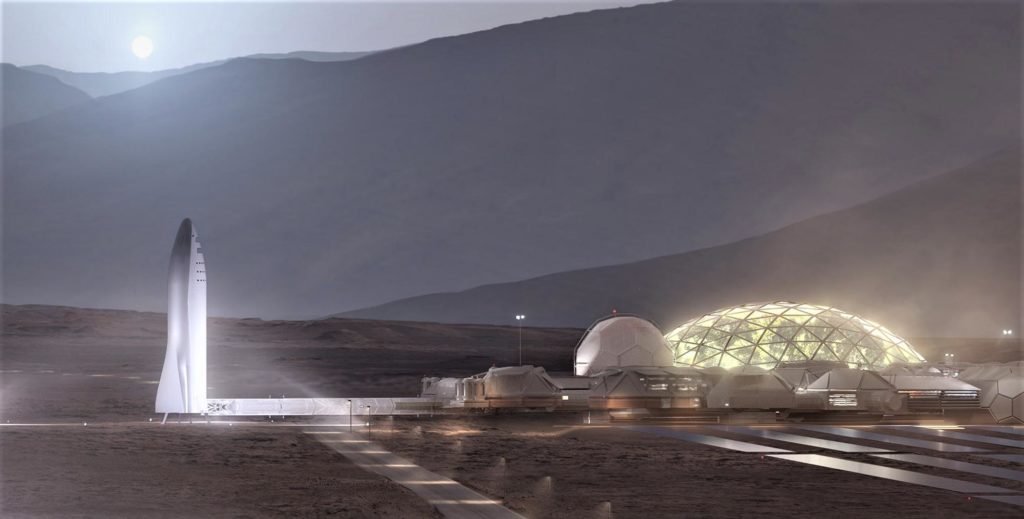
Historical Context and Feasibility
Musk’s vision echoes past explorers—Columbus, Magellan—whose risky voyages reshaped civilizations, albeit with Earth-bound stakes. SpaceX’s track record lends credence: Falcon 9’s 300+ launches by 2025, Starlink’s 6,000 satellites, and Crew Dragon’s ISS missions since 2020 prove Musk delivers. Yet Mars dwarfs those feats. NASA’s Perseverance rover, landed 2021, confirms water ice and CO2—raw materials for fuel and air—but scaling to a colony is uncharted. Cost estimates—$200,000 per ticket, per Musk’s 2024 goal—assume mass production slashes Starship’s $1 billion development tab, a bet unproven by 2025. Critics on X jab, “Apollo cost $150 billion adjusted—Mars won’t be cheap.” Musk counters, “Volume drives cost down—100 ships, not one.”
Implications and Debate
If Musk pulls it off, Mars could redefine humanity. A self-sustaining colony—say, 10,000 people by 2040—might spark a space race, with China’s CNSA or private rivals like Blue Origin joining in. Tech spinoffs (radiation shields, solar grids) could green Earth’s deserts or power lunar bases. Culturally, it’s a mind-bend—kids in 2050 might see Mars as routine as Australia. Yet risks loom: a failed colony could drain billions, equity gaps (who affords the trip?) could breed resentment, and terraforming might falter if CO2 reserves underwhelm, per 2023 Nature studies. On X, fans cheer, “Musk’s our Columbus!” while detractors snap, “Fix Earth’s mess first.” He fires back, “Both—Earth’s not a zero-sum game.”
Conclusion
Elon Musk’s vision for Mars is a clarion call—a technical marvel, a survival strategy, a leap into the unknown. SpaceX’s reusable Starship, now orbiting Earth in 2025 tests, edges this dream closer, building on Falcon’s triumphs and Crew Dragon’s grit. Skeptics abound—timelines slip, costs balloon—but Musk’s history of shattering norms (Tesla’s EVs, SpaceX’s reusability) fuels hope. Colonizing Mars could be humanity’s boldest step, a second home among the stars. What do you think? Could Mars become our next frontier, or is it a dreamer’s mirage? Either way, Musk’s relentless push—part mad genius, part cosmic cheerleader—keeps us gazing upward, wondering what’s possible 🌌.


